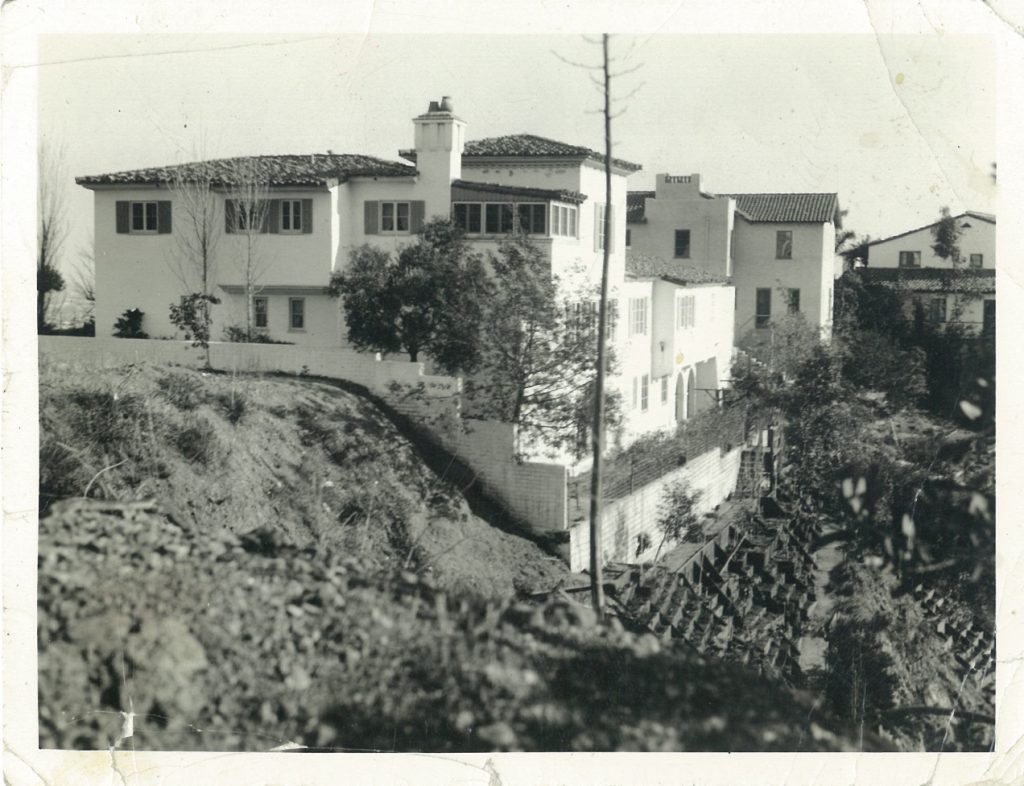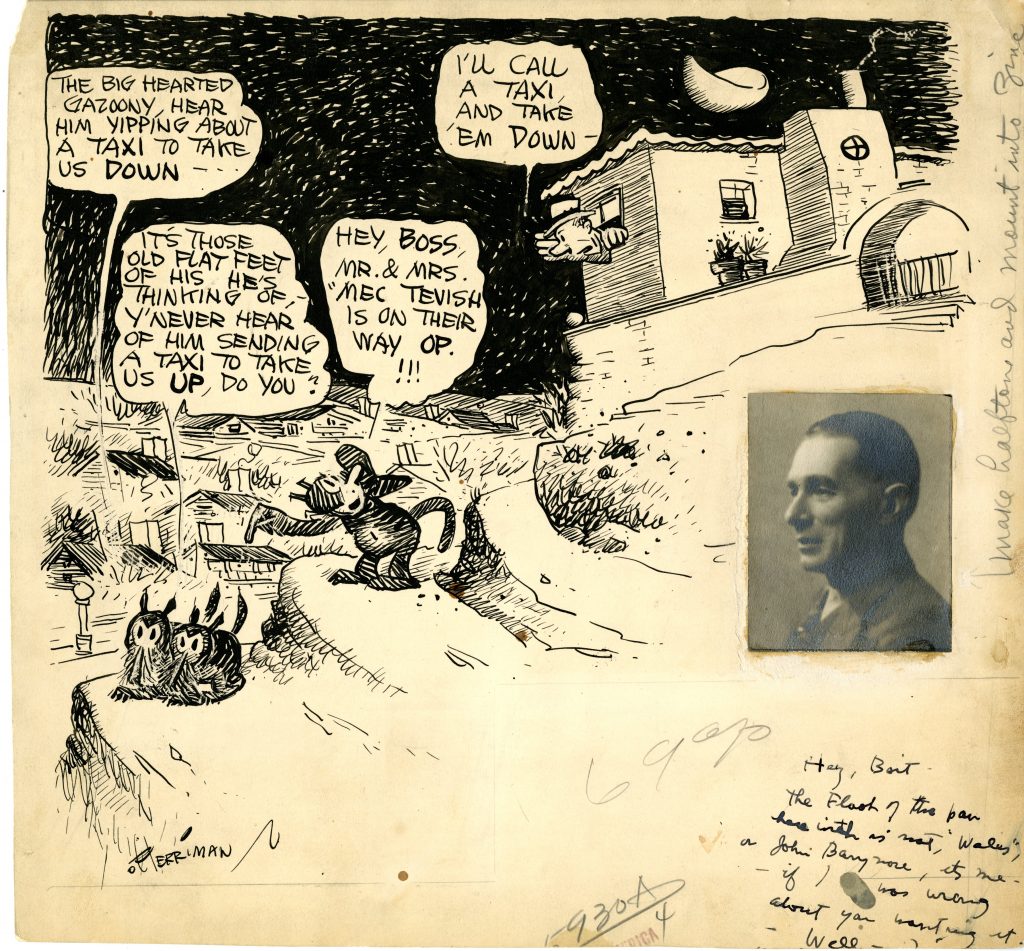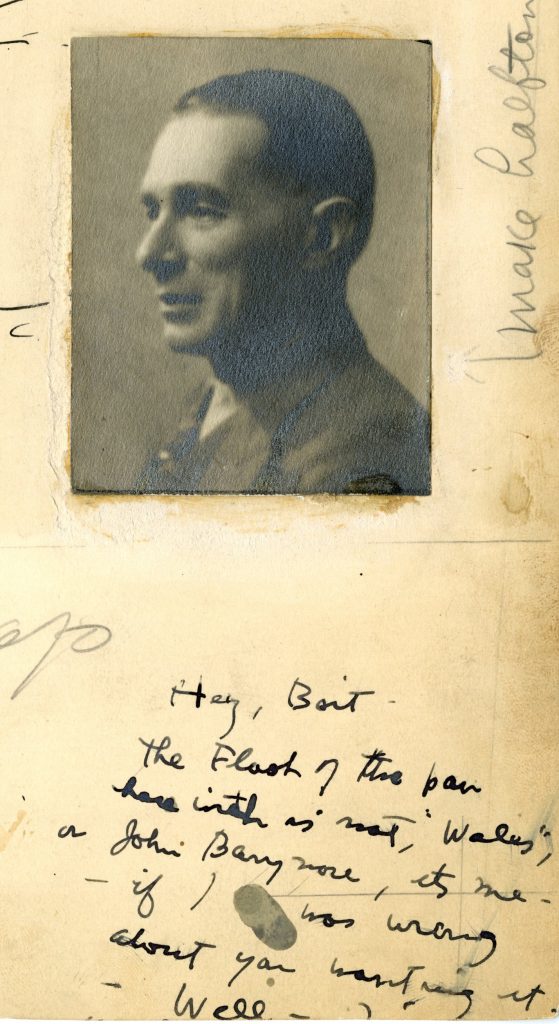George Herriman, creator of the newspaper strip “Krazy Kat,” is generally acknowledged as one of the true geniuses of the comics medium. The endless invention of his strip’s setting, Coconino County, combined with Krazy’s philosophical musings conveyed in a playfully creative language, led cultural critic Gilbert Seldes to devote a chapter to the strip in his book, The Seven Lively Arts, describing it as “the most amusing and fantastic and satisfactory work of art produced in America today.”
Yesterday, Jens Robinson presented us with this remarkable undated Herriman artifact, from the personal art collection of his father, Jerry Robinson:
This is an extraordinary work on several levels. Herriman, the child of a mixed race couple, was listed on his birth certificate as “colored.” He was light-skinned enough to enable him to “pass,” however, and so he did, almost always being seen wearing a hat, to disguise the hair that might have given him away. His complexion did earn him the nickname “The Greek” from his cartoonist colleagues, but he passed successfully enough that, on his death certificate, his race was “Caucasian.”
So, to begin with, this sketch contains a photo of Herriman hatless, unlike in the drawing’s own depiction of him peeking out the window of his Maravilla Drive house in Los Angeles, securely hatted. He calls out to Krazy, who is accompanied by two Scottish terriers, Mrs and Mrs “Mec Tevish.” As it happens, Herriman kept five Scotties, one of whom was indeed named Mactavish.
Further, the entire sketch is accompanied by a personal note to “Bert,” noting that the photo is not of the Prince of Wales, nor of John Barrymore, but of Herriman. “Bert” was Bert Green, a cartoonist and animator who worked on the 1916 silent Krazy Kat cartoons.
Sadly, someone cropped the bottom, so all we can see is, “Hey Bert–the Flash of the pan herewith is not ‘Wales,’ or John Barrymore, it’s me–if I was wrong about you wanting it–Well–”
Finally, the sketch provides a nice representation of Herriman’s Maravilla Drive home in the Hollywood Hills, with its steeply-terraced terrain. The Herrimans moved there in 1930, giving a terminus post quem for the creation of the drawing. Meanwhile, the Prince of Wales–who had created quite a stir with his sense of style–was crowned King Edward the VIII in 1936, providing a terminus ante quem.

So, to sum up, this sketch, in its small span, provides in-jokes, self-representation, friendly banter, and a rare sighting of Herriman’s bare head. That’s a lot for one square foot to contain. This drawing joins our other Herriman holding, a drawing from archy and mehitabel that Herriman hand-colored and presented to Daniel Longwell, his editor at Doubleday, and which can be found in the Daniel Longwell papers. It was discovered there by Michael Tisserand, while researching his comprehensive biography of Herriman, Krazy: George Herriman, a life in black and white. (Many thanks to Mr Tisserand for fact-checking assistance.)

